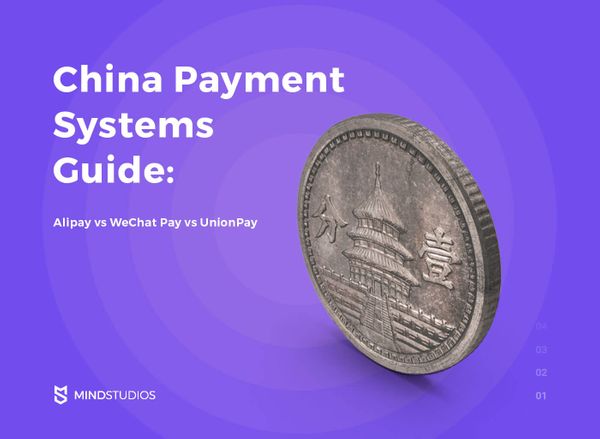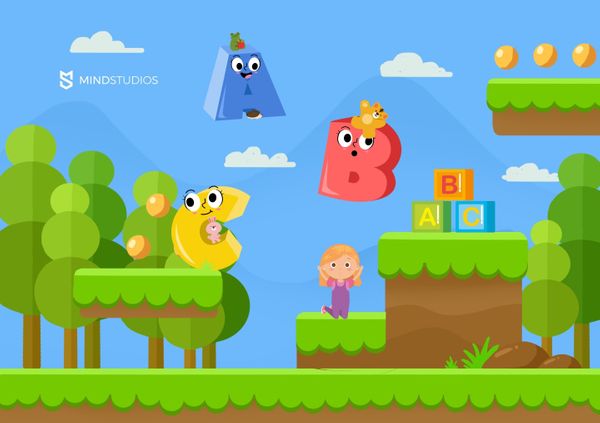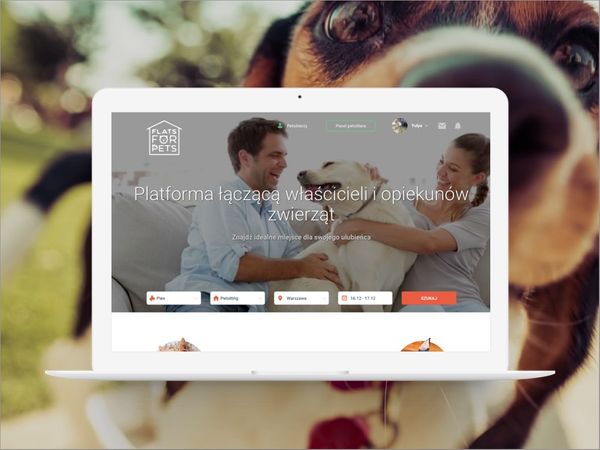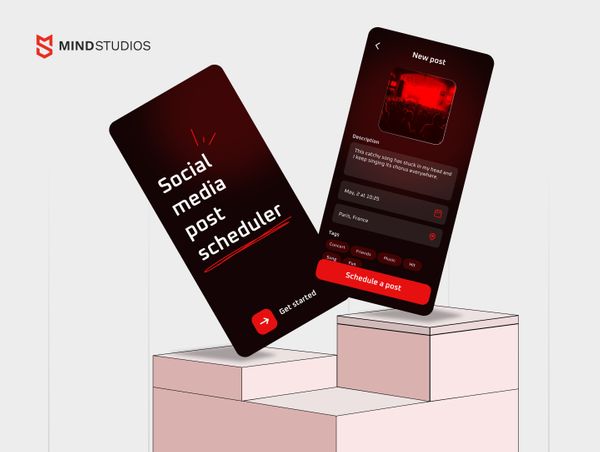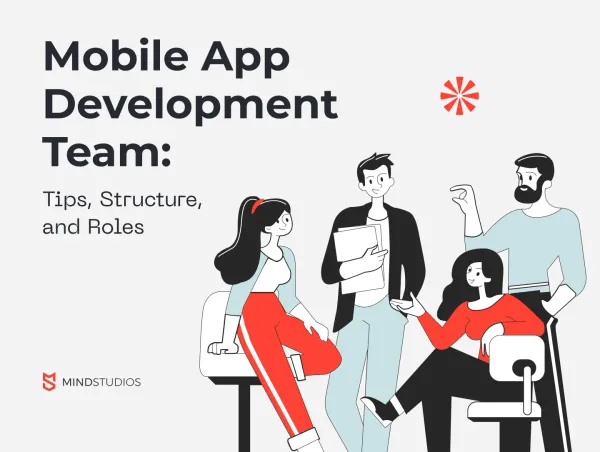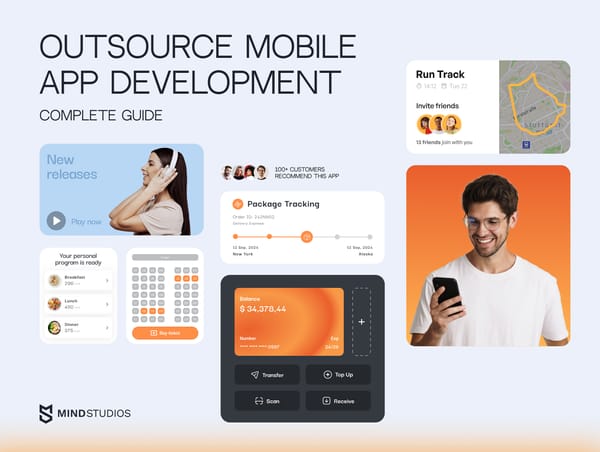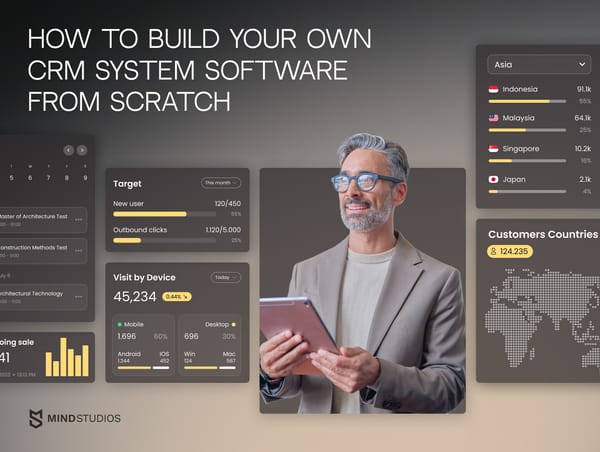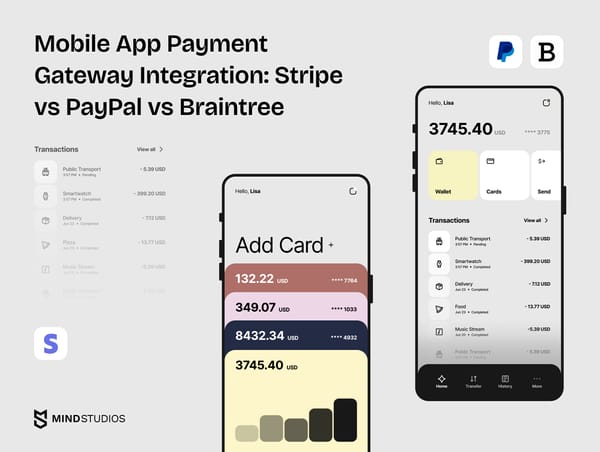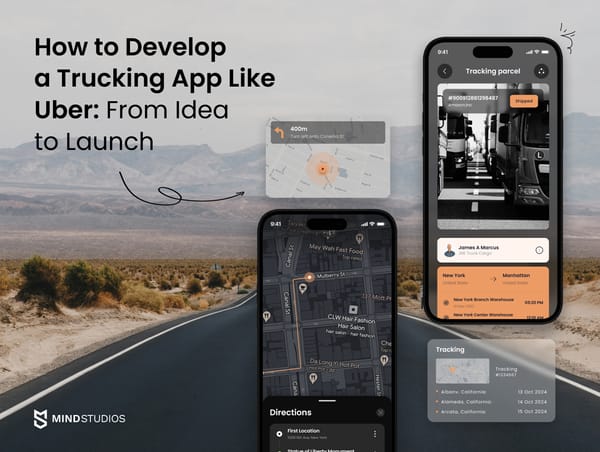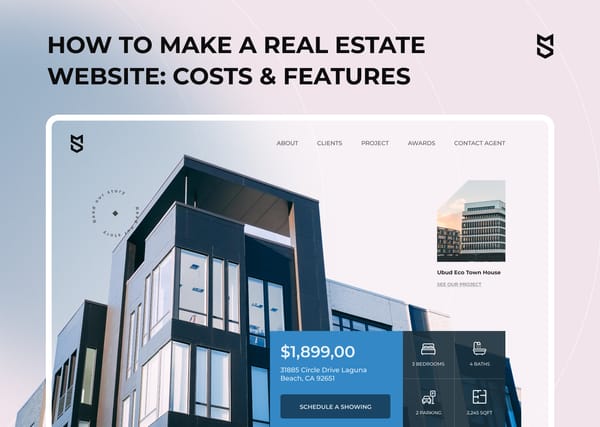Thousands of apps emerge on app stores every day. Not marketed well, your app can turn into a needle that intended users will have to seek in a bundle of hay. But will they have to?
To make people notice, download, and use an app unknown to them, you need to instill in them a belief that it can solve their issues better than any other existing solution. Doing this is impossible without a clear understanding of your target audience's underlying needs. That might be a lot of tremendous effort required but is the difference between market success and failure.
The methods on how to find target audience for a mobile app we mention in this article have yielded results for many, if not all our types of clients — so they might work for you as well.
Define the target audience for a new mobile app based on its type
As a founder, you might want to inform everyone in the world about your app's release — so indispensable and useful it seems to you. It’s in your entrepreneur nature and could be okay until you receive advertisement bills. There's no reason in showcasing your app to 1,000 random people, where hardly 10 will pay. Instead, it’s sensible to pick the relevant 100 target people and get 90 paying app subscribers, isn’t it?
This logic underpinned our advice for George Farkas, the founder of the ArtsKeeper platform that allows artists to sell works as well as build social networks and followings, on how to promote his website. Naturally, in George’s mind, every creative person needs to know about ArtsKeeper — and that’s millions of fairly different users. We suggested George divide his target audience into segments and focus only on one of them, for example, book illustrators. It could help him better know his niche users and polish ArtsKeeper’s marketing campaigns far less costly.
What can help you narrow down your search and match the right target audience for your mobile app? First, start with identifying the category your application belongs to.
Below, we’ve highlighted the most common types of mobile apps with examples of their target users. This is all based on our experience.
Entertainment apps

According to the Morning Consult Brand Intelligence research made for Insider, the target audience for an entertainment app Netflix are rather women than men aged 28–42 who have no college degree, live in the US suburbs, and earn less than $50,000 a year. But it doesn’t mean, however, that Netflix streams only soap operas or family-friendly movies. To satisfy all its users — with children, teens, and adults among them — Netflix offers different movie genres including action, horror, and fantasy.
To correctly determine a target user profile for an app, it's important to focus on the user needs that you suppose your app will meet. For example, for MyMP3Pool, a music streaming platform for professional DJs, we identified two user types: DJs and labels. More so, we divided DJs into the club, mobile, and radio DJs, because users within each category had their own specific needs.
Travel apps
The target audience for a travel app Expedia are so-called conscious progressives. They are open-minded, well-educated people aged 18–30 who are interested in foreign cultures and traveling. However, not only conscious progressives use travel apps — there's a diversity of tourist segments from family vacationers, friends' getaways, and nomads to international jet setters, business travelers, and wealthy retirees.
Business apps
Business apps are designed to improve external communication between a business and its customers as well as internal communication between employees. While networking at the Web Summit 2021, we noted a high demand for highly secure corporate communication tools both for mid-sized businesses and large enterprises.
One of such Signal-like secure messaging apps for the business environment is our current development project for Saudi Arabia. When we drilled down into Saudi Arabia's demographics, we found that the major local population group was the youth from 15 to 34 (36.7%, to be exact), meaning we needed to target young professionals.
Apart from the need for protecting their correspondences, young businessmen suffered from workload pressures, too. This led our secure messenger to have one more core functionality to care about target users’ work-life balance.
Social media apps
There’s no secret that the prevailing amount of Facebook users belong to the 25 to 34 age group whereas TikTok is popular among younger people of 10–19 years.
However, your chances to build a demanded social media app are likely to increase if, in addition to identifying your target users' demographics, you catch the right moment for launch.
This is what happened with the voice-chat app Clubhouse which got a sudden rise in popularity in the first three months after its launch in April 2020. Clubhouse founders managed to timely identify the craving of isolated people for live interaction during the pandemic and offered an original solution. No less important role in marketing Clubhouse played support and promotion from business gurus, tech innovators, and celebrities popular among the target audience for mobile apps.
Shopping apps

Retail companies create shopping applications to give their customers another channel of interaction. However, according to Think with Google, 51% of customers would rather use a mobile site than an app.
One more thing you should know is that the modern target audience for shopping apps, in general, is demanding and spoiled by variety.
The average smartphone user aged 18–64 years old in the US has at least four shopping apps installed on their smartphones. More than half of smartphone users like personalized in-app content while 63% of respondents are likely to buy from companies who send them relevant recommendations on products they have an interest in. One out of two users tends to use a mobile app for shopping because they can get rewards.
More often than not, shopping apps have an extremely broad audience. To create your shopping application, it might be sensible to focus on a particular user segment sorted by a group of goods — just like Wish, a large e-commerce platform, did in 2010.
Delivery apps
According to the Social Grabber, Uber Eats’ target segment in marketing campaigns are fulfillers — people who strive to build a successful career while being good communicators, socially active, and sticklers for sports activities. Fulfillers prefer visiting restaurants, cafés, and pubs instead of eating at home. They appreciate quality and tend to pay extra money for receiving premium products or services.
On the other side, DoorDash, another popular food delivery service in the US, adjusts its advertising videos to focus on hedonists – outgoing people who tend to make spontaneous decisions. Hedonists are driven by the “We only live once” motto and willingly make a purchase when there are some fun and entertainment activities included.
Our recommendation on how to find the target audience for delivery apps will be to take into account the specifics of local people's behavior in using delivery services. For example, our James Butler delivery app for Copenhagen was built on the fact that busy Danes prefer to create shopping lists without too many details like manufacturers or stores.
Education apps

There are different types of learners who need different types of educational apps, starting from kids to students to employees, and everyone in between. When it comes to massively open online courses (MOOCs) like Coursera, edX, Udemy, or Udacity that target a wide public, it’s possible to classify their users into three main groups:
- Students who need some help in a subject or strive to get a head start over fellows
- Employees who aim at getting a promotion, being better at their job, or need to maintain licenses by gaining continuing education units (CEUs) in accredited programs
- Adults who are fond of lifelong learning or strive to radically change their careers
The target audience for education apps like learning management systems (LMSs) tends to consist of middle-sized and large companies, educational institutions, certification boards, coach centers, schools, and the likes.
In addition, don’t forget about numerous young e-learners. For example, among children of up to 8 years old, 28% use one or another educational gaming app (e.g. puzzles, math, reading tales, or memory games). That’s roughly one in four kids.
Game apps
What do we know about the target audience for mobile games? Open statistics sources like FinanceOnline claim that:
- The largest group of gamers in the US which holds 35.3% are people aged 24–34
- Mobile gamers are more men (57.7%) than women (42.3%)
- Meanwhile, female gamers play mobile games 25% longer than male
There’s also the difference between the type of the game preferred by men and women. For example, three out of four mobile gamers who play puzzle games are women.
At Mind Studios, we have a separate game development department with experience in incremental game development. If you need help defining the target audience for an idle clicker game, contact us to get a thorough user analysis.
Health and fitness apps
To ensure our fitness remote coaching software Fitr.Training found its product-market fit, we created three typical user personas:
- Coaches who wanted to flawlessly manage multiple programs, access their clients’ progress dashboards, and easily control revenue streams
- Athletes who wanted to access a large fitness program base, monitor their progress, and have a handy communication tool to easily contact a coach
- Brands that are aimed at presenting as groups of coaches alongside monitoring and managing coaches’ work progress
If you plan to create a Fitbit-like fitness app, you can use these user personas as examples of a typical target audience for fitness apps. More so, you can enrich them with statistical data from open-sourced portals. For example, according to Gallup’s annual Health and Healthcare survey, you can find out the average American fitness app user’s demographics: 18–49-year-old males who predominantly live in cities and earn more than $100K a year.
As for the target audience for health apps, in most cases, it can be divided into healthcare professionals, patients, and health-concerned people. Look what target user groups we highlighted for developing a meditation app Envol:

Identifying your app type, however, may not always help in clearly defining your target audience at the first attempt.
For example, gaming apps for stroke patients target people who are undergoing stroke rehabilitation. They can also have a secondary target audience which is therapists who might prescribe games to their patients.
But what if you plan to create an app for pizza delivery or build a news feed app with a significantly wider target market? Should you consider your target audience as just anyone in the world then?
How to find the target audience for your mobile app if you don't know where to start

Finding your target audience for an app requires data wisely gleaned from both qualitative and quantitative research. It can include determining the general target audience intrinsic to your app’s category, analyzing target market reports from reliable statistics portals, and your own assumptions on who your target users are — but that’s only half of the equation.
Let’s look at a six-step approach to defining the target audience for mobile apps.
Step 1. Explore your current user base
If you already have a website, you can customize Google Analytics to conduct a deep target audience analysis. In case your business is equipped with a custom relationship management system, website blog, live-chat system, social media accounts, or YouTube channel, you can also have access to a ton of data about your consumers.
But what if you build a business from scratch having no customers at all? In this case, one of the rational options could be creating an advertising landing page. A landing page can describe the advantages of your future application with a call-to-action or a poll at the end. Applying Google Analytics to your ad page traffic, you'll be aware of demographics, psychographics, geographic location, and preferable devices of your site visitors.
Step 2. Find out who uses your competitors’ apps
If you have no idea who your potential app users are, spy on those who use your direct competitors’ apps. Start with the easiest part – examine user reviews on the app stores. This can bring you a diversity of insights regarding the needs and wants of your potential users, alongside insights about what your app should and shouldn’t deliver.
To drill down into the profiles of your intended users, you can explore your competitors’ social media activities: find the most popular posts, read comments, and visit accounts of the most active followers. Moreover, you can evaluate the effectiveness of competitors’ marketing campaigns and ASO strategies to find out what works for their target audience and what does not.
Online services like App Annie, MobileAction, Apptopia, and the like can come in handy to help you collect valuable information about the target app users of your competitors.
Step 3. Draw up a preliminary target user profile

At this step, you need to focus on the problem your app will solve, how your app is going to solve this problem, and who might be interested in solving this problem this way. As for the latest, you need to delve into how your target users think, feel, and act. For your app to stand out from the crowd and win users, you should move beyond the obvious, digging deeper and working out your target audience's deepest fears, hopes, dreams, and desires.
Quoting Robert Collier, an American writer and publisher, you need to “enter the conversation already taking place in the customer’s mind”.
Information received from your landing page and competitor analysis backed by your own experience might help you segment your intended app users by the following four core criteria.
Target audience demographics
- Gender. Think of who would rather use your mobile app — men, women, people of all genders?
- Age. Trying to appeal to an 18–60 age group won’t help you much, it’s too big. Try to define the age range of your potential target audience as narrow as possible, for instance, 19–25, or 35–42.
- Location. Even if you plan to capture the whole world, it’s better to validate your mobile app idea on a smaller user group, for example, limited by a particular geographic area: city, region, state, or country. Moreover, knowing your app launch location before the development process will help you account for local restrictions and government policies.
- Language. Define what languages your target audience speaks, accounting for the preferable tone of voice and jargon they tend to use.
- Education. Primary school, high school, college, university – the level of your target user education impacts the way you’ll need to communicate with them through your mobile app’s content and marketing messages.
- Family status. Outline who your target users are: single, divorced, widowed, or married people from standard, single-parent, with many children, child-free families, etc. This parameter reflects the level of responsibility of your target users, nature of decision-making, and preferences regarding the type of apps and subsequently, in-app purchases.
- Occupation. Identify, if your target audience needs your app for professional purposes, what occupations do these people have? By defining this criterion, you can shed some light on your target audience’s income level and solvency.
- Income level. When you’re aware of your target audience’s occupation, you can easily figure out their average income level by looking through job board platforms.
Target audience preferences
- Type of device. Identify what type of device — smartphone, tablet, smart TV, smartwatch, laptop — your target audience prefers to use.
- Type of platform. Define what platform (iOS or Android) is more popular among your intended users.
- Preferable social network. Specify what social networks – Facebook, Instagram, LinkedIn, Twitter – your target audience tends to hang out on.
- Technologies. Here, take into account what extra technologies your target audience is fond of. For example, if you want to launch a mobile app in China, you need to consider that locals prefer to use WeChat and QR-code scanning.
- Favorite apps. Determine what mobile apps your target audience tends to use for managing daily tasks, controlling their expenses, educating, entertaining, maintaining health, and so forth. Knowing this can help you figure out what app features, design elements, and screen interactions your target audience is accustomed to.
Target audience in-market behavior
- Ways of making decisions. Define whether your target users prefer to widen or narrow information; action or caution; storytelling or facts; friends’ recommendations or official resources’ reports; ad hoc or process; continuity or change; personal interests or corporate interests. Describe the process of how your target audience tends to make decisions in daily life.
- Goods/services people tend to buy. Indicate what goods and services (especially those that correlate with your mobile app specifics) are in the esteem of your target audience. For example, if you want to create a fitness app, determine where your target users prefer to buy sports nutrition, clothes, equipment, and the like.
- Reasons for buying. What encourages your target audience to buy goods or services? Whether is it product quality, a tribute to trends, a wide range of goods/services, adequate price/quality ratio, attractive description, good reviews, friends’ recommendations, discounts/bonuses, etc.?
- Frequency of buying. This attribute directly depends on your target audience’s solvency and income level as well as on the importance of and need for buying particular sorts of goods and services. Defining it, you’ll be able to predict the willingness of your target audience, for instance, to pay for your app’s monthly subscription.
Target audience psychographics
- Values. Outline what is important for your target audience. Making money, self-development, communication, longevity, environment protection — what do they value the most?
- Interests. Think of other interests of your target audience that can humanize your target user profile and make them easier to reach. For example, what are their favorite movie genres, literature, places to go on a vacation, and entertainment activities? Do they have hobbies, take care of pets, or take part in social projects?
- Fairs and uncertainties. What keeps your target users up at night, tossing and turning, unable to sleep? What are they worried about? What makes them feel uncertain?
- Needs and wants. Truly understanding what your intended users need and want most of all is a key to defining your user persona profile. Whether it is the need to lose ten kilos before a wedding or deal with mental health issues — your target audience’s challenges are integral to the solution you offer.
- Motivations. Define what can motivate your target audience to achieve their aims, and ultimately, to use your mobile app. This might help you keep a high retention rate provided, of course, that your app will effectively meet their needs.
However, all target audience characteristics you’ll define at this stage are only hypotheses of your own. Therefore, your next step should be finding people with alleged attributes in real life.
Step 4. Find fictional prospects in real life
The only way to find your app target audience is “getting out of the building”, as Steve Blank, a famous entrepreneur, coined in his customer development theory. This literally means going outside (or more commonly, on the Internet) to find people who fit your target user profile and whom then you can directly talk to about their needs and wants.
You can find appropriate respondents offline among your nearest environment including family members, friends, acquaintances, neighbors, colleagues, coaches, etc. or while visiting different offline events where your target audience is supposed to hang out (e.g. conferences, meetings, sports competitions, entertainment events, master classes).
Another place to start finding your target audience for an app is online by searching for two or three major keywords regarding your product or service. To do this, you can use various online keyword research tools, paid or free, including Google Keyword Planner, Google Trends, Term Explorer, or AnswerThePublic.
Search on Google for people who are using those major search phrases while commenting and reviewing wherever they congregate, for example:
- Social media platforms: Facebook, Instagram, Twitter, LinkedIn, Snapchat
- Forums and message/image boards: Reddit, Quora, Imgur, Pinterest, TripAdvisor
- Online communities: Discord, Steam, SpiceWorks Community, HackerNews by Y Combinator
- Blog aggregators: Feedly, Alltop, Tumblr.com, Medium
- Reviews platforms: Amazon, Shopify, Trustpilot, iHerb
- Video streaming services: YouTube, Facebook Live, Twitch, TikTok
- Your competitors: app stores’ pages, website blog, social media accounts
- Online events: business conferences, educational courses, masterclasses, webinars, presentations
Note what people are saying and examine social media accounts of active reviewers, those who express the most dominant feelings and concerns, and those who match your target audience’s criteria (e.g. location, profession, values). Contact these people and check whether they correspond to all the characteristics you’ve assigned to your potential user profile. If not, revise the fictional portrait of your target user by changing criteria or, if needed, by reducing or adding user groups.
Step 5. Create your user personas
Information received from your respondents will allow you to tailor your fictional target user characteristics to the preferences, demographics, psychographics, and in-market behavior of real people who will potentially use your app. Revised, your hypotheses will turn into more reliable user personas with maximum lifelike attributes.
Let Mind Studios get you covered with some tips for creating user personas for your mobile app:
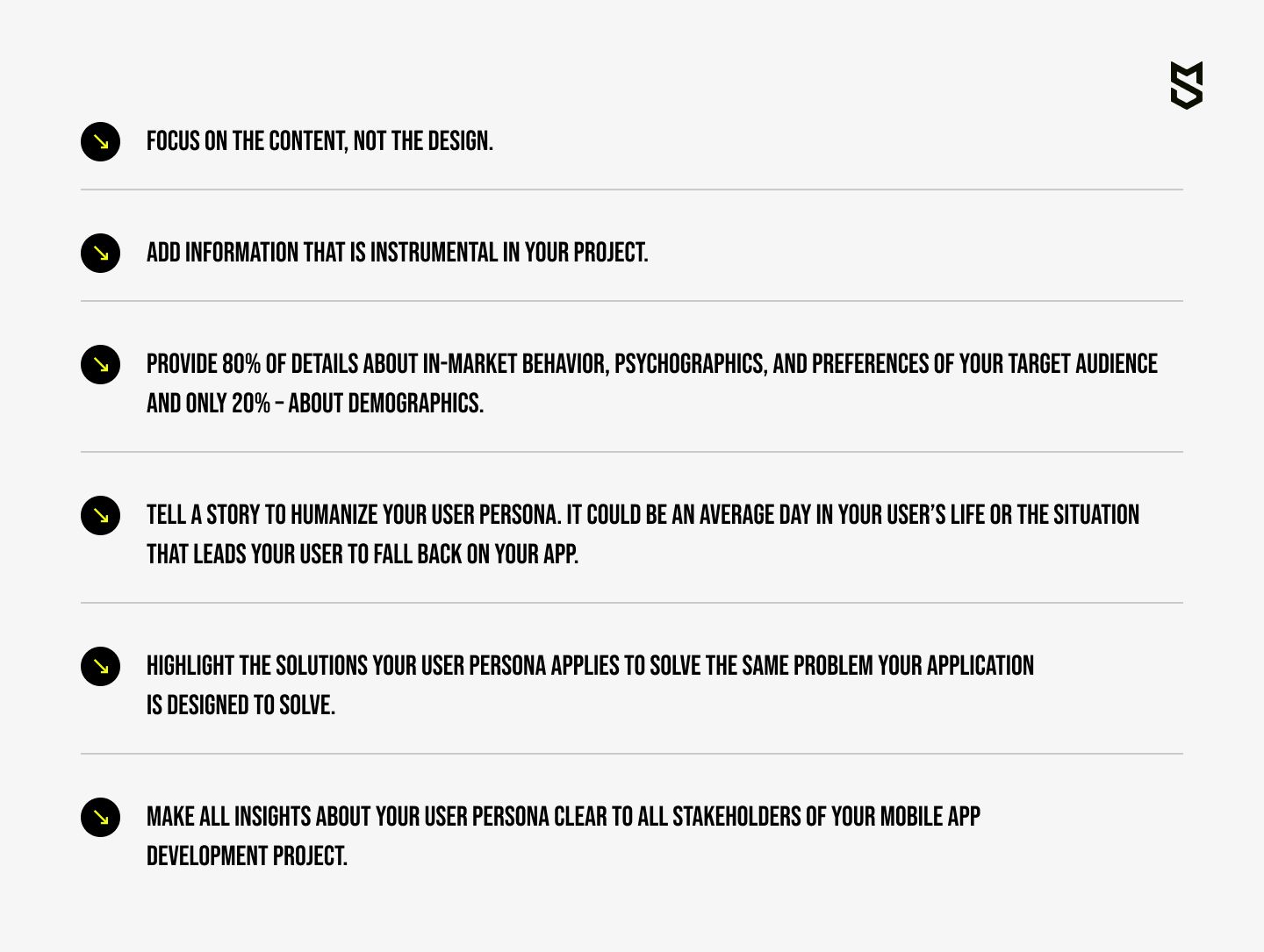
Your user personas are those for whom you’ll build your mobile app, adjust your user engagement strategies, and tailor your marketing messages. The only nuance is that your user persona’s characteristics are not something carved in stone, and therefore, you need to complement and update user persona information, for instance, every month.
Step 6. Iterate and revise
After you launch your MVP, MLP, MMP, or fully fledged app version, however, the question of how to find a target audience for an app may still arise. Once you’ve launched your app, day by day, you begin to:
- collect feedback in the form of user reviews on the app stores, complaints, and suggestions received by your support team
- receive first-coming data from user engagement metrics, including the number of downloads, retention rate, conversion rate, cost per acquisition, average session length, and more
New-coming insights about your initial app users might differ from the information in your user personas. By thoroughly analyzing this data, you'll be able to know your target audience much better.
This will enable you to know exactly where your target audience hangs out and congregates, and therefore find the most efficient acquisition channels. In close cooperation with your product, sales, and marketing managers, you'll be able to customize your in-app alerts, provide valuable content, and fine-tune your marketing campaigns. Provided that revising your target audience profiles will become your employees’ usual practice, though.
How to define the target audience for an app: Proven methods
While going through the above-described six steps for defining the target market of your mobile app, at some point, you might need useful techniques to streamline the process. Let’s take a closer look at those that have helped us time and again to analyze, systematize, and visualize data we received from target market research for our projects.
Mark Sherrington’s 5W method
This method is based on five simple questions. Answers to these questions will help you make assumptions to form a preliminary portrait of your target app user:
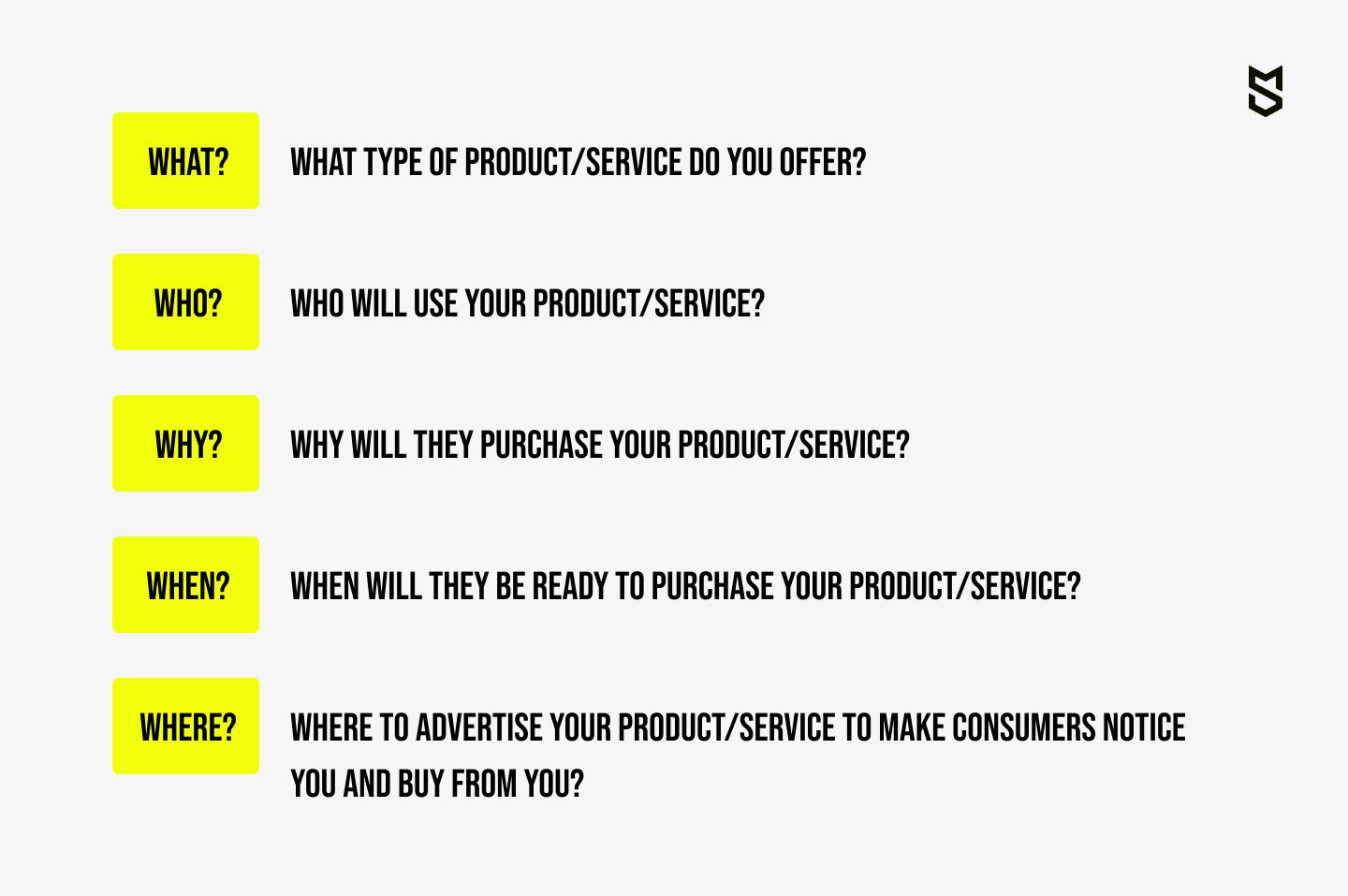
Spectrum with opposite traits
This technique is also helpful when you need to determine your potential app user characteristics, especially in-market behavior. What you need is to pick possible yet opposite behavior traits of your intended users and put them on a spectrum. Then, discuss whether a particular attribute is inherent in your target user and score it on this spectrum.
Example of defining target audience’s characteristics using a spectrum with opposite traits.
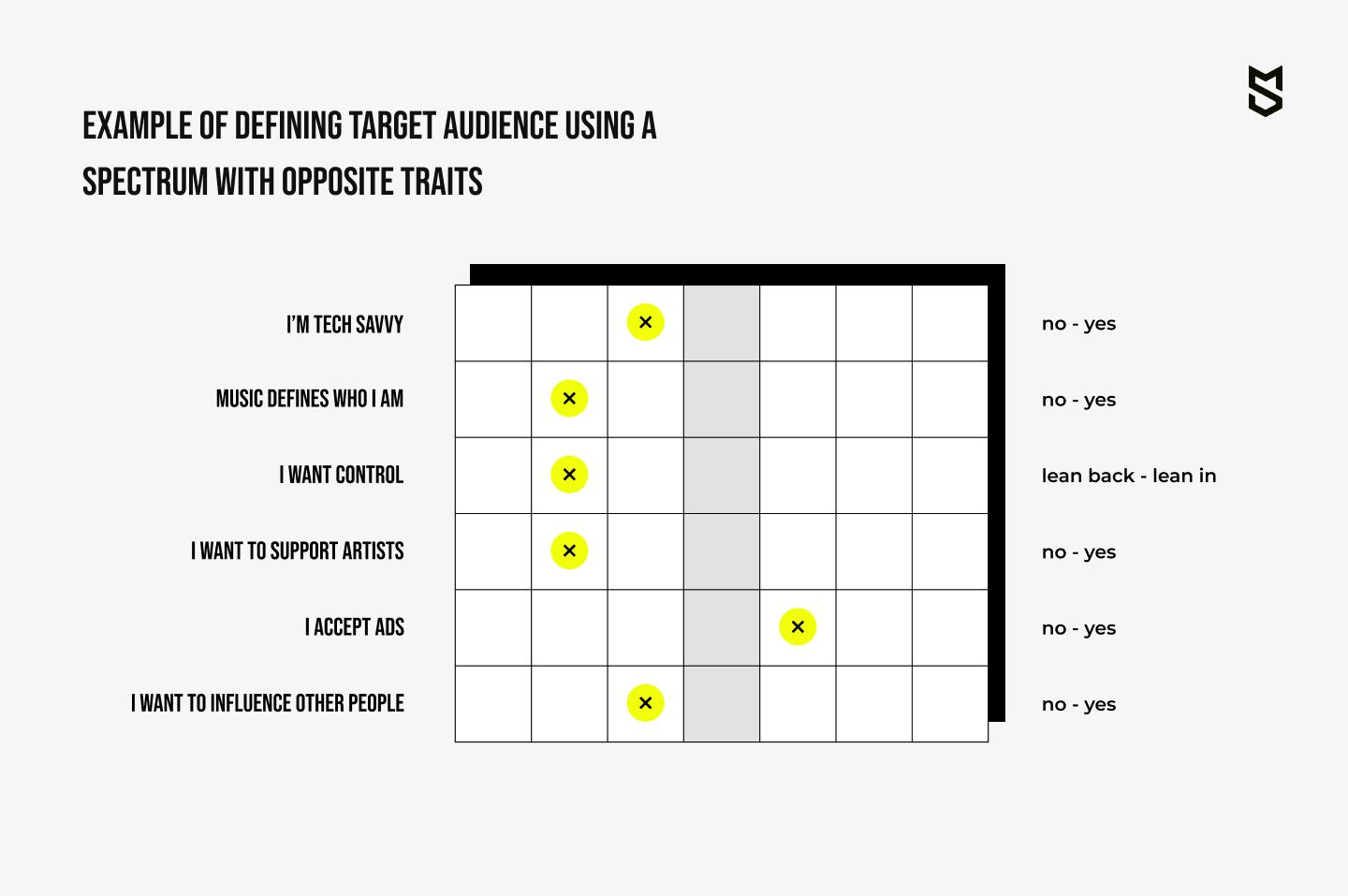
Average check size
There's a reverse method to define your target user’s profile by figuring out their average income first. If you know your average check size, think of what monthly wage do they need to have to be able to pay for similar stuff? By using online job board platforms, you’ll find vacancies with suitable salaries and ultimately, define the occupation, education, location, and approximate demographic characteristics of your target audience.
Halo strategy spreadsheet
While searching on Google, conducting competitor analysis, and exploring your current customer base, chances are, you’ll need to organize your findings into some sort of spreadsheet. Sabri Suby, the author of a bestseller “Sell like crazy” suggests using the Halo strategy worksheet for this case:
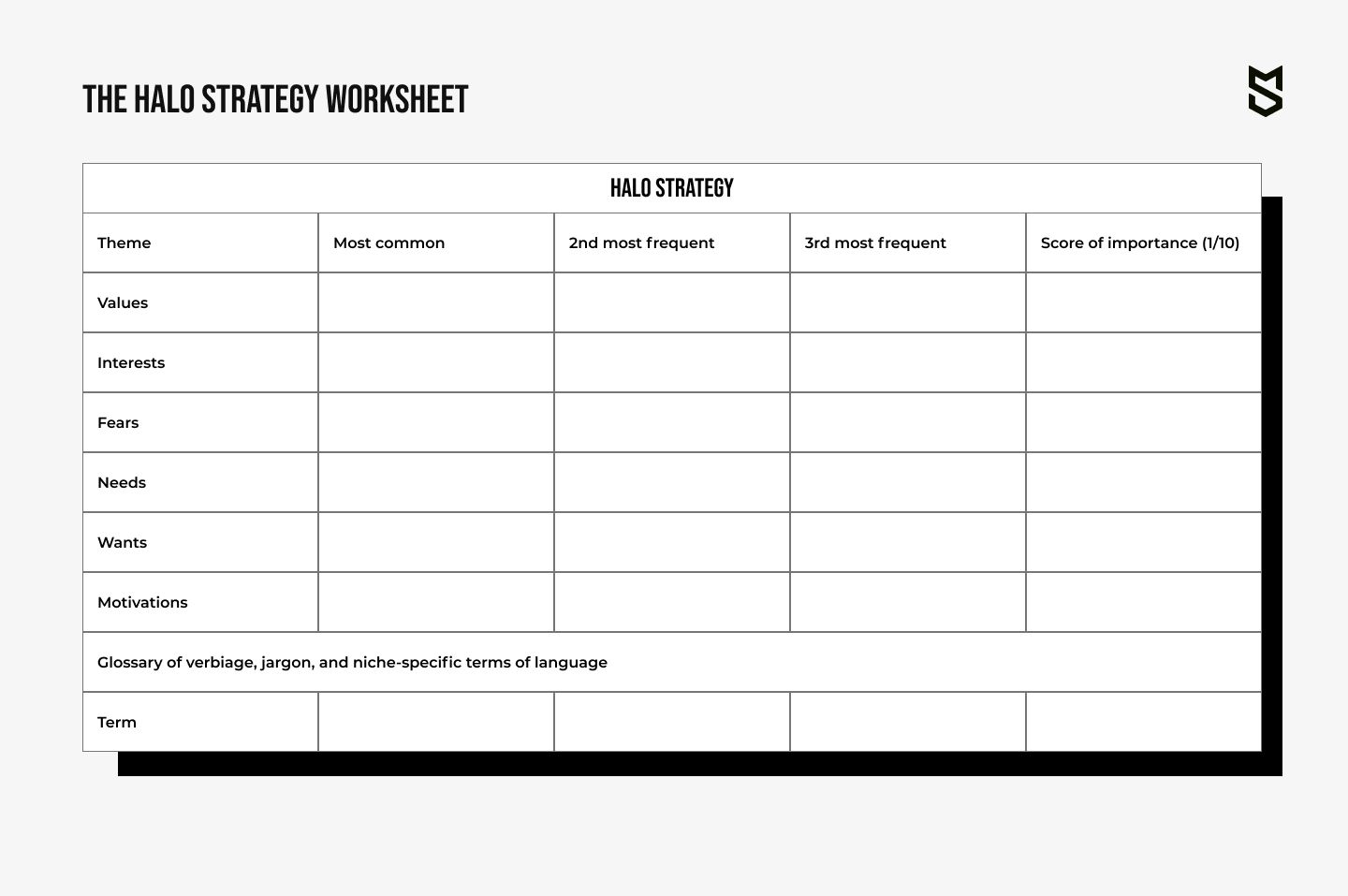
Online survey tools
After you find people who fit your target user profile, you need to contact them, but how?
One-on-one interviews, both offline and online, enable you to get the most exhaustive information, as the saying goes, firsthand but are likely to be time-consuming. You can organize focus groups that will represent your target user segments. As a rule, discussions in focus groups can provide you with valuable insights not only about the problem you’re going to solve or underlying needs your potential users have but also about the viability of your solution.
Probably, the highly-used method among product managers to determine the target audience for mobile applications as well as get product feedback is to run online surveys or polls using services like SurveyMonkey, SoGoSurvey, Qualaroo, or ProProfsSurveyMaker. These services allow you to set parameters for respondents according to your target user profile and gather feedback quickly and affordably.
Marketing campaigns
As we’ve mentioned above, to know how to find your target audience, it’s a good idea to create some buzz before your mobile app will see the world, and making an advertising landing page is just one of the possible marketing tools. Like with online survey tools, you can strictly set parameters of the audience to whom you want to send your advertising messages when running social media advertising campaigns via Facebook Ads, Instagram Ads, TikTok Ads, and the like.
To help you define your target market for a mobile application, consider one more option to promote your product or service that has gained momentum since 2020 – digital out-of-home advertising. This technology allows advertisers to monitor the effectiveness of their marketing messages on the fly instead of waiting until the end of a campaign. They get a clear picture of what ad design, what time of day/week, and what location works well for their target audience.
Example of determining the target audience for a mobile app – Mind Studios experience
Here, we’ll share how we determined the user persona to build a recruitment-oriented professional network platform in Southwest Asia.
First, we described the demographics, urgent needs, and frustrations of Maya Pratt, a fictional executive recruiter:
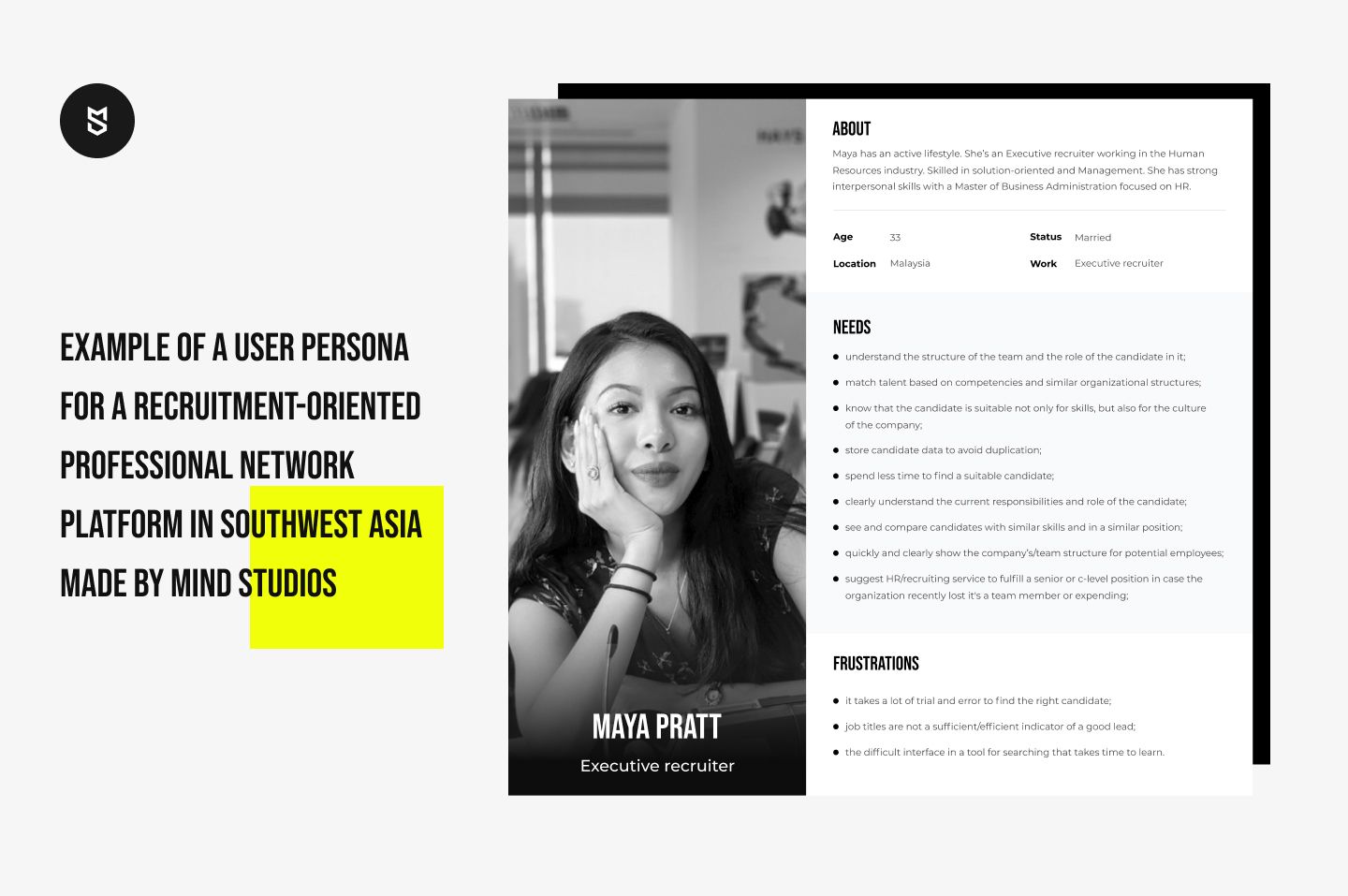
Then, we highlighted her most common job stories:
- “As an executive recruiter, I need to find and hire a C-level or Senior candidate from Southwest Asia, therefore, I need a service to fulfill this need”
- “As an executive recruiter, serving as a consultant or an advisor, I need to advise on how to build a team and how to craft job descriptions, compensation packages, etc., based on the expertise of my clients’ firms”
Finally, we broke down her possible pain points, feelings, and actions she took to solve her issues and put them into a spreadsheet that displayed a customer journey map:
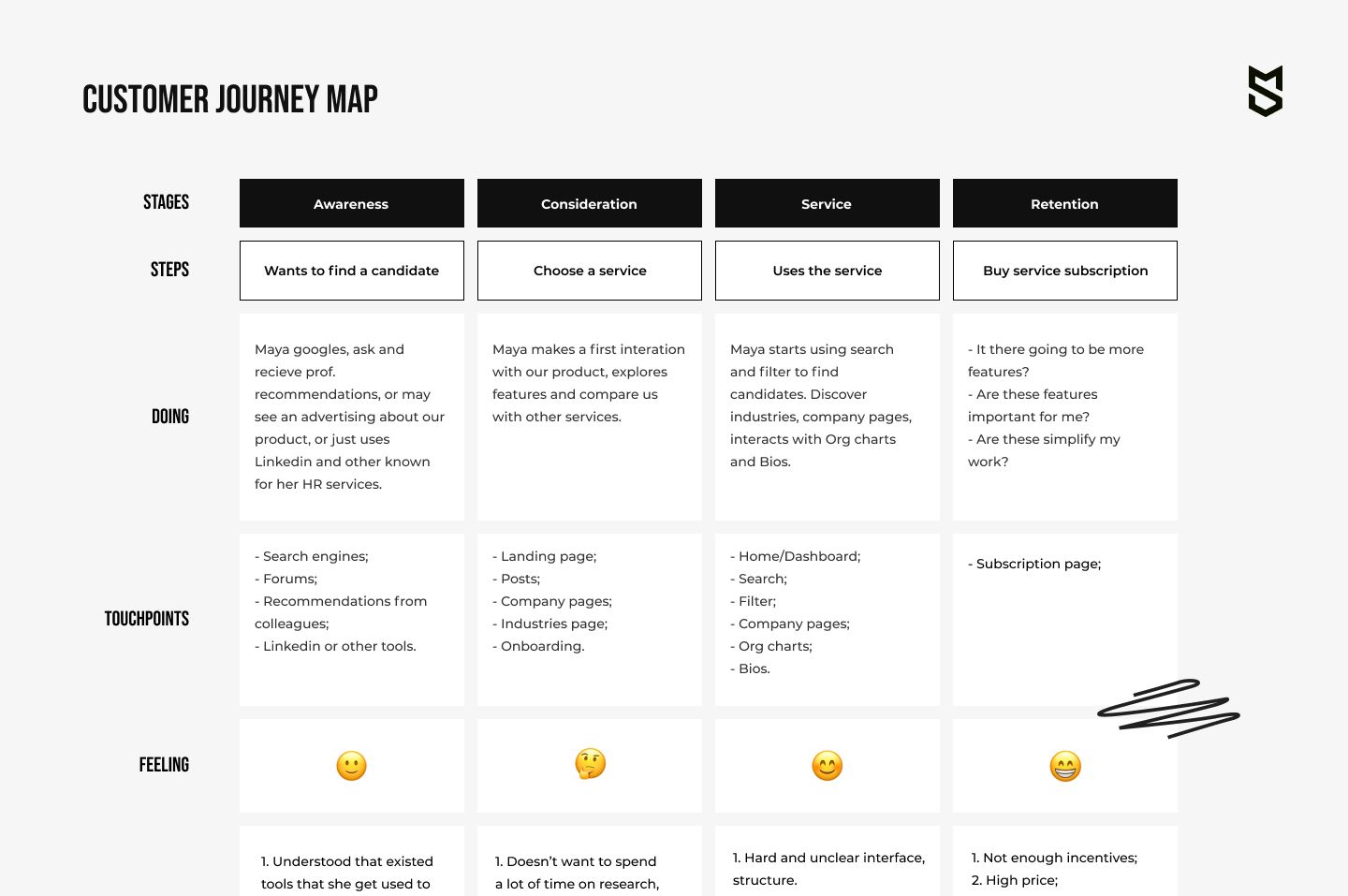
Summing up
In the recent WSJ post, Deloitte published seven global marketing trends for 2022 under the title “Put customers first” for a reason. Rightly finding your target audience for an app is a key to your app's success in reaching its product-market fit. In turn, this means a hassle-free hit to your break-even point, robust return on investment, and, ultimately, a predictable rise in revenue – that is, a well-established business.
For us, turning your mobile app idea into a sustainable venture is not just a job, but a mission we wholeheartedly take on. For this, we do a lot during the pre-design discovery stage from conducting thorough market research to competitor analysis to customer development.
Want to bring your mobile app idea to market with us? Spare a few more seconds to fill in our contact form.

